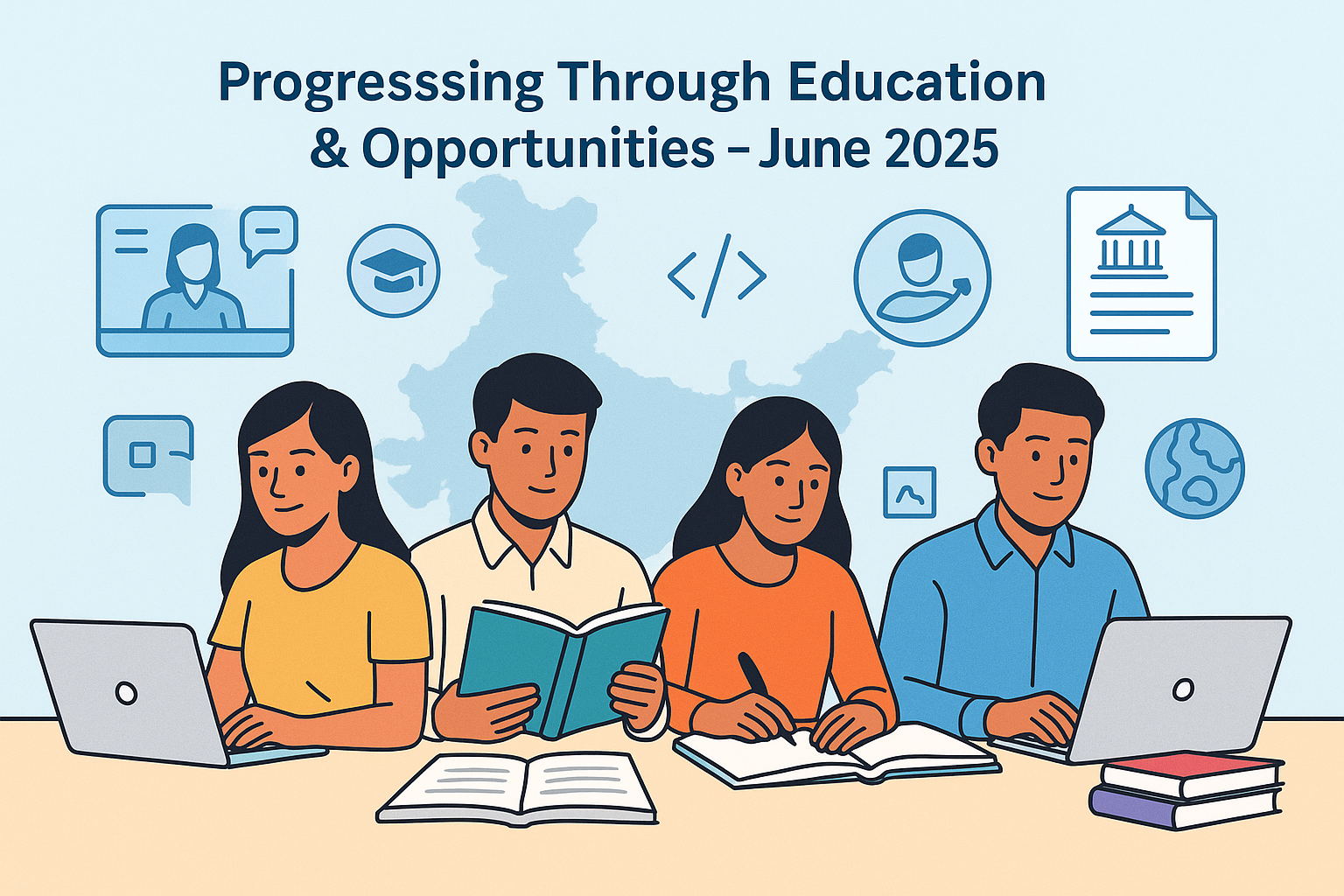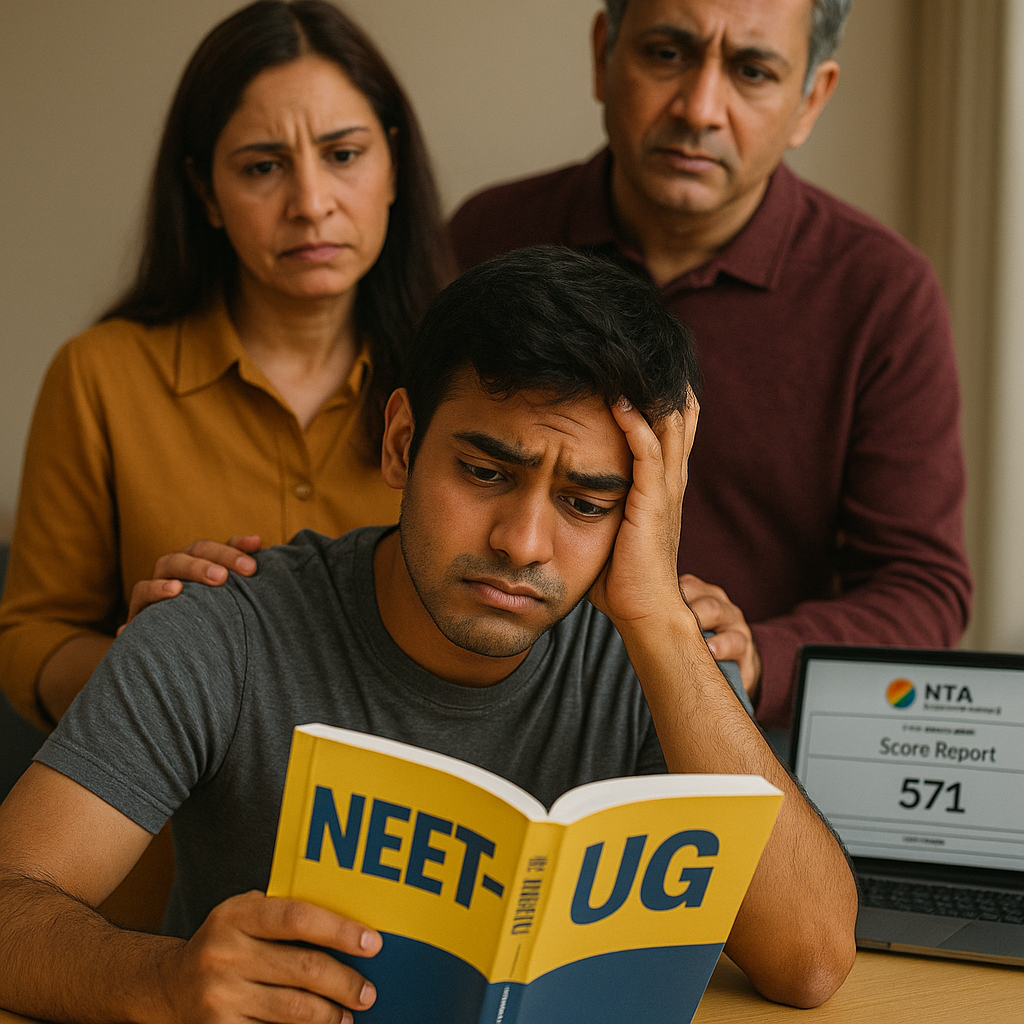Higher education and policy trends in india

📘 Higher Education and Policy Trends in India – June 2025
Hi guys, welcome back to our new blog! I am your writer and well-wisher, here to bring you the latest updates and insights that matter to your future.
As I mentioned before, we feature inspiring stories from our readers in each blog. Today, we will explore a real-life story shared by Riya from Nepal. To know what made her journey so unique and motivating, make sure to read till the end.
India's higher education landscape is experiencing a pivotal shift. With the New Education Policy (NEP) 2020 continuing to influence institutional structures and learning models, June 2025 has brought key developments that highlight both progress and pressing challenges. From global critiques to national reforms, this month has revealed important trends impacting students, educators, and policymakers.
🌍 The UNESCO Report: A Wake-Up Call
A recent UNESCO report provided a candid look at India's education system. While it acknowledged achievements in expanding access, it raised alarms over learning quality. Despite rising enrolment, many students continue to struggle with:
• 🧠 Basic literacy and numeracy
• 🧑🏫 Poor teacher training
• 🏫 Weak school leadership
• 📉 Regional inequality
This shift in focus—from enrolment to actual learning outcomes—is crucial as India seeks to transform itself into a knowledge-driven economy.
🏛️ Institutional Crisis: Voices from Within
Literary critic and academic Supriya Chaudhuri recently warned of a crisis in Indian universities. Her main concerns:
• 🗳️ Political interference in academics
• 💸 Budget cuts limiting research
• 🧾 Bureaucratic control replacing academic leadership
"The university as a space of free thinking is shrinking," she said.
This signals an urgent need to protect academic freedom and autonomy, especially in publicly funded institutions.
🧮 National Credit Framework and Flexible Learning
The National Credit Framework (NCrF), part of NEP 2020, is transforming how students approach education in India. Key features include:
• 🔁 Credit transfers across school, vocational, and college levels
• 🎓 Flexible degree pathways
• 🛠️ Integration of skill-based learning
This system encourages multidisciplinary and modular education, helping learners design their own paths based on interest and industry needs.
🤝 Skill Development and Industry Collaboration
States like Jharkhand are setting examples through public-private partnerships. The new TechBee Program, in collaboration with HCL, trains Class 12 graduates in:
• 💻 Coding
• 📊 Data analytics
• 🤖 Artificial intelligence
• 🔐 Cybersecurity
These programs prepare youth for real-world jobs, bridging the gap between education and employment.
⚠️ Challenges That Remain
Despite these reforms, several barriers continue:
• 🏙️ Urban-rural education divide
• 📡 Weak digital infrastructure in rural colleges
• 👨🏫 Faculty shortages and outdated training
• 🌐 Limited international collaboration
Addressing these issues requires:
• 💰 Higher public investment
• 📋 Transparent recruitment
• 🗣️ Preserving freedom of thought
• 📚 Inclusive and modern curricula
🌟 Real Story of the Week: Riya from Nepal
Now as promised, let’s take a moment to explore the inspiring journey of Riya from Nepal.
Riya, a bright student from a small town near Kathmandu, faced immense challenges during her early education. Limited internet access and financial constraints often stood in her way. But her dream of pursuing higher education never faded.
In 2024, she applied for an online scholarship offered under an Indian ed-tech collaboration. Through hard work and consistent learning, she completed a certified diploma in Educational Technology and now mentors rural students in Nepal — using the same digital tools that once seemed out of reach for her.
Her message to others:
“Never underestimate the power of free resources and self-belief. The world is changing, and education is opening new doors every day.”
Riya’s journey reminds us that with determination and access to the right platforms, even the biggest obstacles can turn into stepping stones.
✅ Conclusion
June 2025 highlights both opportunity and urgency for Indian higher education. While reforms like NEP 2020, the NCrF, and new skilling initiatives are promising, real success will come from ensuring quality, autonomy, and equity across institutions.
As India and its neighboring countries grow together in education and innovation, stories like Riya’s prove that transformation is not just possible—it’s already happening.
Thanks for reading – stay connected for more educational updates, exam tips, and inspirational stories. See you in the next blog!




